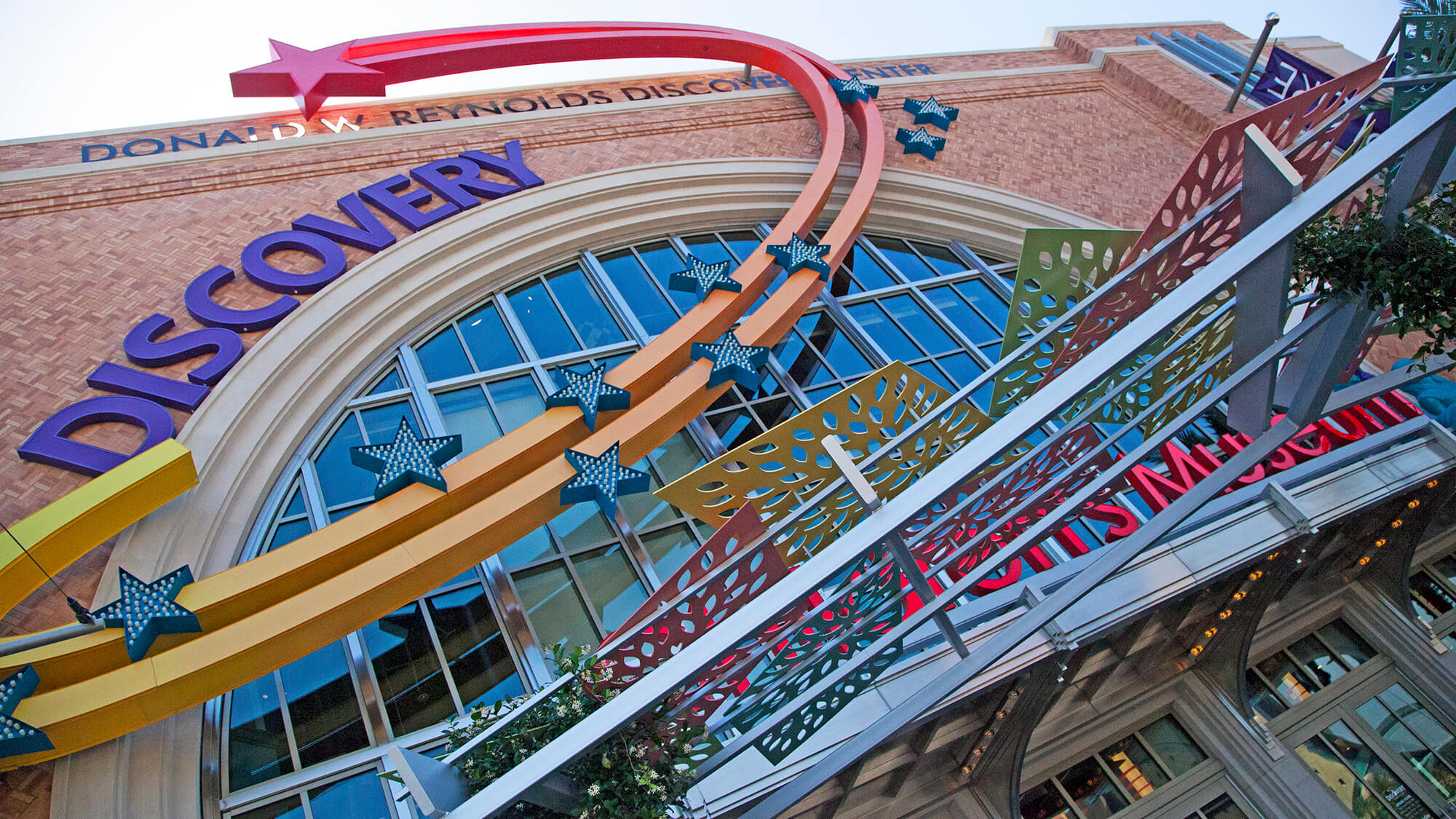Kids Museum: Think vibrant colors, hands-on exhibits, and squeals of delight! It’s more than just a place for kids to burn off energy; it’s a dynamic learning environment designed to spark curiosity and foster a love of exploration. We’ll dive into the creation and management of these amazing spaces, from designing engaging exhibits to crafting educational programs that cater to different age groups and learning styles.
Get ready to explore the world of children’s museums!
This deep dive covers everything from target audience analysis and exhibit development to effective marketing strategies and museum operations. We’ll examine how to create a safe, welcoming, and stimulating environment that maximizes learning and fun for kids of all ages. We’ll also look at successful examples of kids’ museum branding and explore the critical role of volunteers in creating a positive visitor experience.
Kids Museum Target Audience
Understanding the diverse needs and interests of children across different age groups is crucial for creating a successful and engaging kids museum experience. This involves careful consideration of age-appropriate exhibits, targeted marketing, and effective educational strategies. The following sections detail how to tailor museum offerings to maximize impact and appeal.
Age Ranges and Exhibit Design
Different age groups have vastly different developmental stages and interests. A well-designed museum will cater to these differences with age-appropriate exhibits. For example, toddlers (ages 1-3) benefit from sensory-rich environments with large, easily manipulated objects. Preschoolers (ages 3-5) thrive in imaginative play areas with opportunities for role-playing and storytelling. Elementary school children (ages 5-12) are ready for more complex exhibits that incorporate scientific concepts, historical events, and problem-solving challenges.
Marketing to Parents and Caregivers
Effective marketing is key to attracting the target audience. This requires understanding the motivations and concerns of parents and caregivers. Marketing materials should highlight the educational value of the museum, emphasize safety and supervision, and showcase the fun and engaging activities available. Utilizing social media platforms, local partnerships, and community outreach programs can effectively reach parents and caregivers.
Educational Benefits of Different Exhibit Types
| Age Group | Exhibit Type | Educational Benefit | Engagement Strategies |
|---|---|---|---|
| Toddlers (1-3) | Sensory Play Area | Develops sensory awareness, fine motor skills | Bright colors, soft textures, interactive elements |
| Preschoolers (3-5) | Imaginative Play Area (e.g., pretend grocery store) | Enhances social skills, language development, creativity | Role-playing opportunities, storytelling props |
| Elementary School (5-7) | Interactive Science Exhibit (e.g., simple machines) | Introduces scientific concepts, problem-solving skills | Hands-on experiments, puzzles, visual aids |
| Elementary School (8-12) | Historical Exhibit (e.g., Ancient Egypt) | Expands historical knowledge, critical thinking skills | Interactive timelines, artifact replicas, multimedia presentations |
Exhibit Design and Development
The design and development of engaging and educational exhibits are critical for a successful children’s museum. These exhibits should be interactive, hands-on, and cater to the specific age groups and learning styles of the target audience. Storytelling and imaginative play are vital components in creating memorable and impactful experiences.
Interactive Exhibit Design: Simple Machines (Ages 5-7)
This exhibit would feature a series of interactive stations demonstrating simple machines like levers, pulleys, and inclined planes. Children could experiment with different weights and distances to observe the effects on force and movement. Each station would have clear instructions and visual aids, encouraging children to explore cause-and-effect relationships. Safety features would include padded edges and sturdy construction.
The exhibit would incorporate bright colors and engaging graphics to capture children’s attention.
The Importance of Hands-on Learning
Hands-on learning is essential for children’s development. It allows them to actively participate in the learning process, making it more engaging and memorable. By manipulating objects and experimenting, children develop a deeper understanding of concepts and build critical thinking skills. Hands-on exhibits also encourage collaboration and problem-solving, fostering social and emotional development.
Exhibits Incorporating Storytelling and Imaginative Play
Storytelling and imaginative play are powerful tools for engaging children and making learning fun. For example, a historical exhibit could be designed as a journey through time, with interactive elements and storytelling prompts. A science exhibit could feature characters and narratives that help children understand complex concepts. A well-designed exhibit could seamlessly integrate storytelling and imaginative play, creating a rich and immersive learning experience.
Exhibit Development Plan: “Under the Sea” Exhibit
This exhibit would focus on marine life and ocean conservation. It would include interactive touch screens with information about different ocean creatures, a large-scale model of a coral reef, and a hands-on activity where children could build their own miniature ocean ecosystems. Accessibility features would include ramps, tactile displays, and audio descriptions. The budget would include materials, construction, staffing, and marketing costs.
A detailed risk assessment would be conducted to ensure visitor safety.
Educational Programs and Activities
Educational programs and activities are crucial for enhancing the museum experience and fostering a love of learning. These programs should be engaging, interactive, and tailored to different age groups and learning styles. A variety of teaching methods should be employed to cater to diverse learning preferences.
Museum Workshop Curriculum: Ancient Rome (Ages 8-10)
This workshop would explore the history, culture, and daily life of ancient Rome. Activities would include creating Roman mosaics, designing and building Roman structures (e.g., aqueducts), and role-playing as Roman citizens. The curriculum would incorporate storytelling, hands-on activities, and discussions to engage children and promote a deeper understanding of Roman history. Assessment would be based on participation and creative output.
Remember to click o’reilly’s jacksboro highway to understand more comprehensive aspects of the o’reilly’s jacksboro highway topic.
Engaging Activities Promoting Creativity and Problem-Solving
Source: travelnevada.com
A variety of activities can promote creativity and problem-solving skills. These include building challenges using recycled materials, creating art projects based on museum exhibits, designing and conducting simple science experiments, and participating in collaborative storytelling sessions. These activities encourage children to think critically, creatively, and collaboratively.
Comparison of Teaching Methods

Source: legorreta.mx
Different teaching methods, such as inquiry-based learning, project-based learning, and collaborative learning, can be employed in museum educational programs. Inquiry-based learning encourages children to ask questions and investigate answers independently. Project-based learning involves working on long-term projects that integrate multiple skills. Collaborative learning promotes teamwork and communication. The choice of method will depend on the specific learning objectives and the age group of the participants.
Workshops Fostering Critical Thinking and Scientific Inquiry
A series of workshops could be designed to foster critical thinking and scientific inquiry. These workshops could incorporate hands-on experiments, data analysis, and problem-solving challenges. For example, a workshop on climate change could involve analyzing data on global temperatures and designing solutions to reduce carbon emissions. Another workshop could focus on the scientific method, encouraging children to formulate hypotheses, conduct experiments, and draw conclusions.
Museum Operations and Management
Effective museum operations and management are crucial for ensuring a positive visitor experience and achieving the museum’s educational goals. This includes managing staff and volunteers, maintaining a safe and welcoming environment, and developing effective marketing strategies. Addressing key challenges proactively is vital for long-term success.
The Role of Volunteers
Volunteers play a vital role in children’s museums, contributing to visitor experience and freeing up staff for other tasks. Volunteers can assist with educational programs, supervise exhibits, provide customer service, and participate in fundraising activities. A well-trained and supported volunteer program can significantly enhance the museum’s effectiveness and efficiency.
Addressing Key Management Challenges
Challenges in managing a children’s museum include maintaining a clean and safe environment, managing budgets effectively, attracting and retaining qualified staff, and developing engaging exhibits. Strategies for addressing these challenges include implementing robust cleaning and safety protocols, securing diverse funding sources, providing professional development opportunities for staff, and continuously evaluating and improving exhibits.
Creating a Safe and Welcoming Environment
Creating a safe and welcoming environment for all visitors is paramount. This includes implementing clear safety guidelines, providing adequate supervision, ensuring accessibility for visitors with disabilities, and fostering a culture of inclusivity and respect. Regular safety audits and staff training are crucial for maintaining a safe and welcoming atmosphere.
Marketing Plan to Increase Attendance
A comprehensive marketing plan is needed to increase museum attendance and brand awareness. This would include targeted advertising campaigns on social media and local media outlets, partnerships with schools and community organizations, and the development of engaging website content. Utilizing data analytics to track marketing effectiveness is crucial for optimizing campaigns.
Museum Branding and Visual Identity

Source: honeykidsasia.com
A strong brand identity is crucial for attracting visitors and communicating the museum’s mission and values. This involves developing a logo, visual style guide, and brand voice that appeal to both children and adults. A comprehensive marketing plan is essential for launching a new museum and building brand awareness.
Logo and Visual Style Guide
The logo should be memorable, colorful, and reflect the museum’s playful yet educational nature. The visual style guide should define the use of colors, fonts, and imagery, ensuring consistency across all marketing materials. The design should be tested with both children and adults to ensure broad appeal.
Brand Voice and Messaging Strategy
The brand voice should be engaging, informative, and approachable. Messaging should clearly communicate the museum’s mission, highlighting the educational value and fun experiences available. The tone should be positive, enthusiastic, and family-friendly.
Successful Children’s Museum Branding Campaigns
Successful campaigns often use bright colors, playful imagery, and family-oriented messaging. They leverage social media to reach a broad audience and partner with local organizations to extend their reach. Examples include museums that have used interactive social media contests or collaborations with children’s book authors to promote their brand.
Comprehensive Marketing Plan for a New Museum
The marketing plan would include a detailed budget, target audience analysis, marketing channel selection (social media, local partnerships, PR), and key performance indicators (KPIs) to measure success. A phased rollout approach, starting with pre-opening buzz-building and continuing with ongoing engagement, would be employed.
Illustrative Examples of Exhibits: Kids Museum
The following are detailed descriptions of hands-on exhibits focusing on different subject areas, incorporating interactive elements and addressing key learning objectives. Each example considers materials, size, safety, and sensory considerations.
Hands-on Solar System Exhibit, Kids Museum
This exhibit would feature a large-scale model of the solar system, with interactive elements such as touch screens providing information about each planet, a spinning model demonstrating planetary orbits, and a hands-on activity where children could build their own miniature solar systems using foam balls and paint. Materials would be durable and age-appropriate. Safety considerations would include securing the model to prevent tipping and using non-toxic paints.
Exhibit on Different Cultures
This exhibit would showcase various cultures through interactive displays and sensory experiences. It would feature interactive maps, traditional clothing and artifacts (replicas for safety), and opportunities for children to engage in traditional crafts and games from different parts of the world. Sensory elements could include soundscapes, smells, and textures associated with each culture. Cultural sensitivity would be paramount in the design and implementation of this exhibit.
Exhibit Exploring the World of Music
This exhibit would feature a variety of interactive musical instruments, such as xylophones, drums, and keyboards. It would also include sound exploration stations where children could experiment with different sounds and create their own musical compositions. The design would emphasize bright colors, engaging graphics, and clear instructions. Educational goals would include introducing children to different musical instruments and genres, encouraging creative expression, and fostering an appreciation for music.
Last Recap
Creating a successful Kids Museum requires a blend of creativity, educational expertise, and smart management. From designing interactive exhibits that capture imaginations to developing engaging educational programs that foster critical thinking, the key is to create a space where learning is an adventure. By focusing on the child’s experience, prioritizing safety and accessibility, and implementing effective marketing strategies, we can ensure that every visit to the Kids Museum is a memorable and enriching one.
So let’s build something amazing!



